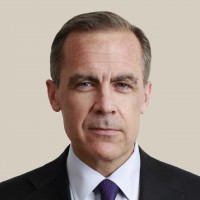
Introducing the Bank’s latest inflation report, Carney (pictured) spoke of the ‘fog of Brexit’ which was causing “short-term volatility and a series of tensions that made it difficult to predict just what lays ahead for the economy.
Carney noted that while some businesses were stepping up their preparations for the possibility of a no-deal Brexit, the economy as a whole was still not prepared for such an eventuality.
He also suggested that Brexit is acting as a brake on the housing market, which in turn is hurting the economy. “With house prices now flat nationwide and mortgage demand soft, spending on all aspects of housing (including renovations and transactions) could be a short-term drag on growth,” he said.
Hard to predict
The uncertainty surrounding what the UK will look like after we leave the European Union has led to the Bank of England downgrading its forecast for GDP growth by 0.5 per cent to 2 per cent.
This uncertainty also means that while the Bank is forecasting a “gently rising path for the bank rate over the next three years”, this is based on “ a smooth transition to a Brexit deal that is the average of various possibilities”.
Carney concluded: “The appropriate path of monetary policy will depend on the balance of the effects of Brexit on supply, demand and the exchange rate. The response will not be automatic and could be in either direction.”
The Bank of England’s Monetary Policy Committee voted unanimously to hold base rate at 0.75 per cent at February’s meeting.
The subdued housing market
The Bank’s inflation report noted that the activity in the housing market has been subdued, in contrast to resilient levels of consumer spending, pointing to the fact that levels of approvals have been largely unchanged since 2016.
It noted that annual house price inflation was just 2.8 per cent in November 2018 according to the Office for National Statistics’ house price index, the lowest rate of house price inflation in more than five years.
However, it noted that new house building was a “relatively strong segment” of the housing market.
The report stated: “Private housing starts increased by 14 per cent in 2018 Q3, and investment in new dwellings increased by 0.8 per cent, having risen relatively consistently for some time. The market for new build houses has been supported by the Government’s Help to Buy equity loan scheme, which was introduced in 2013 and recently extended in a more limited form until 2023.”















